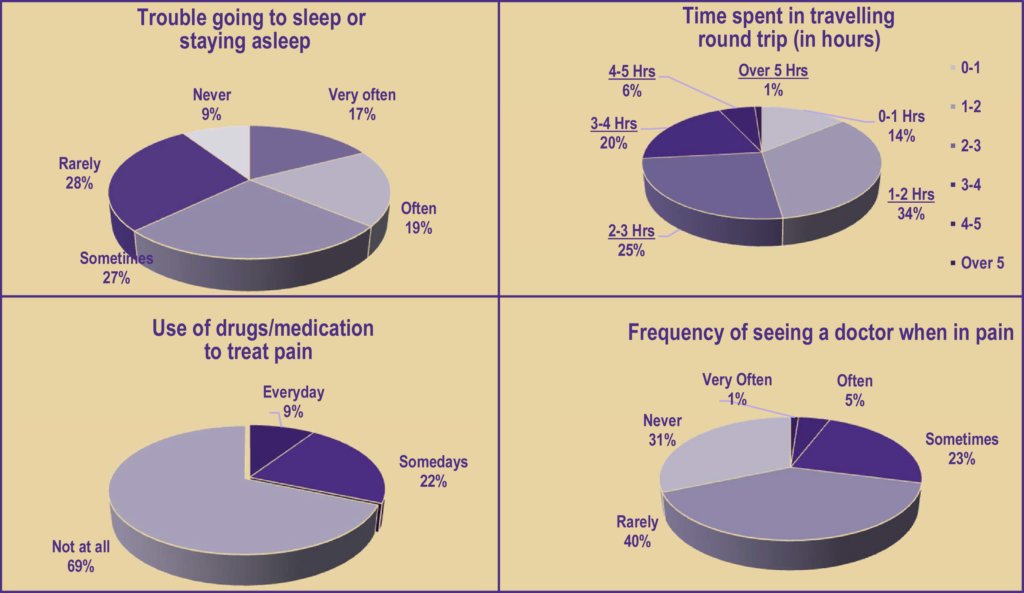Ergonomic cart handling in roofing trade
The research characterizes and assesses the ergonomic hazards associated with manual cart operations in the commercial roofing trade. It provides transferable scientific evidence that practitioners can immediately adopt to reduce overexertion injury.

Background
Hand carts are used in nearly every construction trade for material handling. Nonetheless, material-cart handling can be strenuous and lead to overexertion injuries.
Research aim
The aim of this study is to produce a thorough understanding of how the cart condition, tire type, physical environment–related factors, and load interact to influence the ergonomics and productivity of cart handling.
Research methods
Eighteen roofing carts with different conditions, tires, and loads were tested by one subject on three laboratory tracks: one L-shaped, one with ramps within constrained spaces, and one with obstacles within constrained spaces. A multiple linear regression analysis was performed to quantify the main and interaction effects of the factors of interest on the cart operations.
Results
The research findings confirm that using aged carts increases the injury risk by as much as 30.5% and decreases productivity by 35.4%. Our study also highlights the necessity of keeping an open space for cart operation; the travel distance from a cart to a ramp/obstacle should be greater than 61 cm. Finally, the results suggest the at-risk thresholds for different ramp slopes and obstacle heights, and the safe load capacities for the various working circumstances that are common on construction sites.
Research-to-practice deliverables
The evidence created in this study is translated into administrative controls for cart handling to reduce overexertion injuries and enhance performance:
- Ergonomic Guidelines – Using Four-Wheel Carts In The Roofing Trade
- 7 Tips for Using Four-Wheel Carts in The Roofing Trade
- Training Toolbox Talks
- Knowledge Test
- Animated Story 1: Slow and Steady Wins the Safety Race
[youtube_advanced url=”https://youtu.be/OyPGBUggwyw” width=”1100″ height=”500″ responsive=”yes” controls=”yes” autohide=”alt” autoplay=”no” mute=”no” loop=”no” rel=”no” fs=”yes” modestbranding=”no” theme=”dark” playsinline=”no” title=”Video 1: Slow and Steady Wins the Safety Race ” padding=”0 0 0 0″]
- Animated Story 2: Be your Co-worker’s Keeper and Win the Safety Race Together
[youtube_advanced url=”https://youtu.be/2v6p52GRJlE” width=”1100″ height=”500″ responsive=”yes” controls=”yes” autohide=”alt” autoplay=”no” mute=”no” loop=”no” rel=”no” fs=”yes” modestbranding=”no” theme=”dark” playsinline=”no”] - Guide for Discussion after Animation Screening
Publications
- Zhang Z, Lin K Y, Lin J H. Factors affecting material-cart handling in the roofing industry: evidence for administrative controls[J]. International journal of environmental research and public health, 2021, 18(4): 1510.
- Zhang Z, Lin K Y. Overcoming Physical Obstacles with Four-Wheeled Hand Carts: An Evidence-Based Ergonomics Guideline for the Commercial Roofing Trade[C]//Construction Research Congress 2020: Safety, Workforce, and Education. Reston, VA: American Society of Civil Engineers, 2020: 95-104.
Funding

SHIP Grant Project – Funding and support for this project has been provided by the State of Washington, Department of Labor & Industries, Safety & Health Investment Projects




